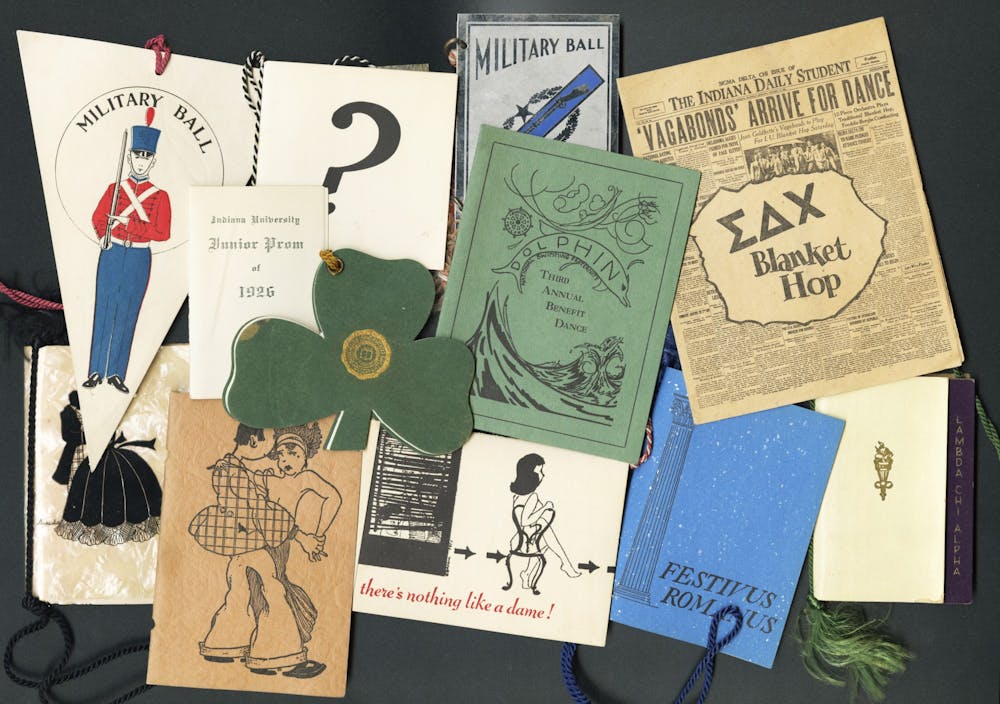The IU Archives, located in the east tower of Herman B Wells Library, includes about 18,000 cubic feet of records.
In it are pieces of IU’s history logged through photographs, negatives, film, audio, architectural records, faculty papers, oral histories and a slew of scrapbooks. Director of the Archives Dina Kellams likes the more personal accounts, such as home videos and diaries.
“For me, those are some of my favorite parts of the collection,” Kellams said.
Each of the items listed tells a story of people from IU’s past, from undergraduate students to the former president and chancellor Herman B Wells.
Scrapbook from 1922 of IU baseball team traveling to Japan
In March 1922, 12 IU baseball players, chief ball boy Ernie Pyle and a few faculty chaperones embarked on the S.S. Keystone State to Tokyo to play Waseda University in a 16-game series.
One of the players, Leonard Ruckelshaus, put together a scrapbook of their trip, complete with personal photos, newspaper clippings, box scores, baggage check tags and team photos. Ruckelshaus identified the clippings with short labels and nicknames. The team’s assistant coach, Roscoe Milton, was nicknamed “Cow.”
One of the newspaper clippings reported that classes were canceled across IU's campus the day the team left so students could participate in a farewell parade.
While local newspapers thoroughly reported the team’s journey, the scrapbooks provide a personal account of the trip.
“We can read about some happenings or an activity in the president's records, but when we’re able to look at it from the student’s perspective, it’s really fun,” Kellams said.
Herman B Wells’ home videos on the Moving Image Archive website
The Herman B Wells home movie collection, contains personal footage from his national and international travels, family holidays and his time working in Germany from November 1947 to May 1948.
One video shows footage of Wells’ first trip to Mexico in 1940 and some writing explaining the context of the video. Here, for example, are his personal videos from his visit to the pre-Colombian city of Teotihuacan, Mexico. It also includes a video of a speech outside the Indiana Memorial Union and his travels in the United States and South America.
This gallery is accessible on the IU Libraries Moving Image Archive website.
Dance cards
From the late 1800s through the mid-1900s, women used to document their dance partners during formal dance events using dance cards. These were thin, palm-sized notebooks in which a woman could check her availability for upcoming dances by recording the names of men who asked her to dance. Handy strings connected pencils to the notebook.
Brad Cook, curator of photographs at the archives, said that typically sororities, fraternities, clubs and other organizations arranged the dances. The fraternity Sigma Delta Chi was known for organizing the Blanket Hop, a dance that raised money to make giant wool blankets for IU football seniors as gifts. The front cover of the dance cards for the Blanket Hop were made out of red felt: a mini-replica of the gifts for the football seniors.
Some dance cards included the name of the band playing at the dance and the names of chaperones at the event. The dance card for the 1952 Military Ball, for instance, has a list of distinguished guests. One of them was then-President Wells. Music was played by Woody Herman and his orchestra.
The history of IU is open to investigation and perusal at the IU Archives. Today’s students have a place in IU’s intricate and unexpected history, as do internationally traveling sports squads, revolutionary presidents and student events.






